From grape to glass
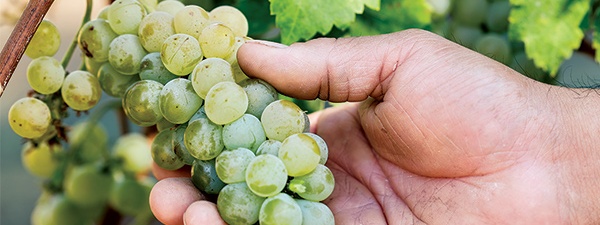
Summer 2024 California Bountiful magazine
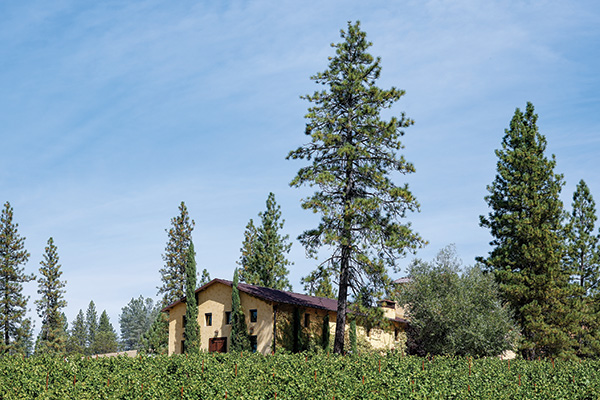
A look at how wines of character are made
Story by Stacey Vreeken
Photos by Fred Greaves
A vineyard is in every glass of wine you drink. So, too, are a thousand decisions that result in wines showing not only the character of the vineyard but the people who create them. What to plant where in the vineyard, when to pick and how to barrel and age the wine all contribute and reflect the preferences of the winery owner and the winemaker tasked with interpreting that vision.
At Miraflores Winery in El Dorado County, owner Dr. Victor Alvarez has established a winery and custom-crush facility that reflects the beauty of his agricultural heritage from Colombia and a focus on precision and quality obtained from his career as a pathologist.
“The property was bought for its beauty and serenity,” Alvarez says. “Miraflores is very distinctive. Its wines are unique—the product of terroir, good growing techniques and excellent winemaking.”
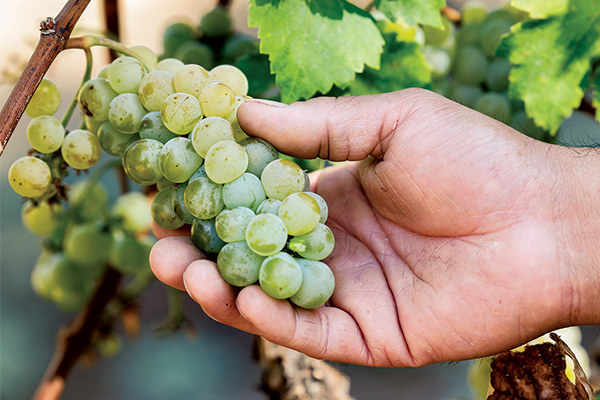
Country estate setting
The winery is set back on country roads outside Placerville, surrounded by vineyards, presenting an Italianate façade outside and marble counters in the tasting room. Touches of whimsy remind visitors they’re in Gold Country, including a stagecoach on a shelf behind the bar.
Patrons enjoy tasting at the bar or at a seated tasting on the expansive patio. Recommendations and explanations are offered by in-house sommelier and general manager Ashlee Cuneo, who also oversees food-and-wine-pairing events.
“We are consistently rotating out the wines according to season and according to what we want to showcase next,” Cuneo says of the tasting menu, which peaks at about 20 options.
With a specialty in pairing food and wine, Cuneo looks for wines that stand up to, enhance and are enhanced by food.
“Miraflores is a winery of distinction and distinctive wines but also (one that) produces really great food-pairing wines,” she says.
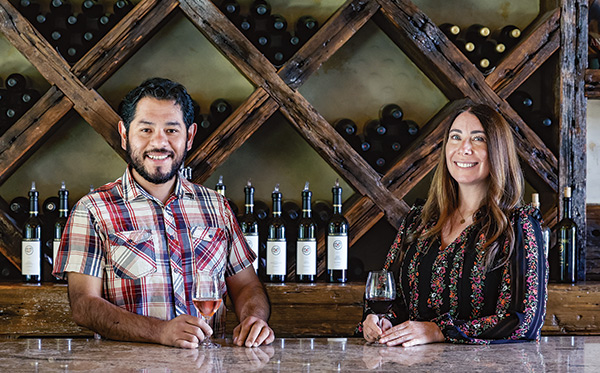
Winemaking team
Now retired in San Diego, Alvarez is a frequent visitor to the winery and trusts in Cuneo to present his wines and winemaker Fernando Abarca to craft them.
Abarca understands exactly how a vineyard ends up in a glass. He worked part-time harvesting in the vineyard at Miraflores while a student from Mexico studying computers. In the style of wineries throughout history, Abarca was in 2007 asked by then-winemaker Marco Cappelli to apprentice. Today he makes all the wine for not only Miraflores but also for the winery’s custom-crush clients. In the latter role, he works alongside Cappelli, who is now a consultant.
Wanting to showcase the taste of the fruit, Abarca crafts wines that he says “speak for themselves.” The philosophy is “less is more,” with as few additives as possible. “We want every single varietal to express its own flavor,” he says.
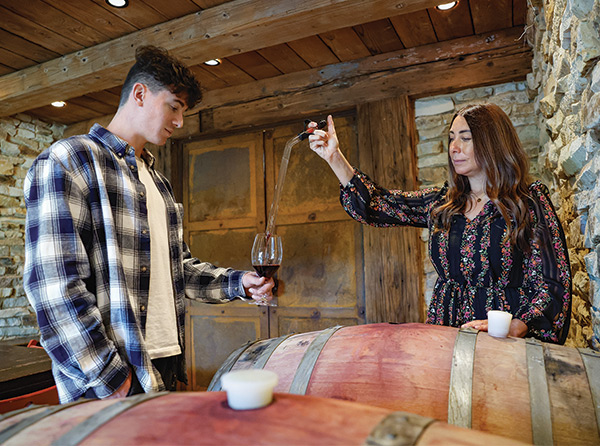
What’s in the vineyard
It starts with planting the right varietals to suit the climate. For Miraflores, at an elevation ranging from 2,200 to 2,900 feet in the rolling Sierra Nevada foothills, that means warm-climate zinfandel, petite sirah, malbec and Barbera among the 16 varietals selected.
“Each has a unique character,” Abarca says.
El Dorado County has many microclimates and is known for being able to support a wide range of grapes. Each vineyard’s environmental factors such as soil, topography and climate combine to create terroir, or that site’s individual flavor profile imparted to the grapes. At Miraflores, the mature vines and nutrient-rich soils reflect the distinctive terroir there, and you “can see the results in the wine,” Abarca says.
All 45 acres of vineyard are pruned and trained the same way. These decisions contribute to the ultimate taste of the grapes, picked at peak ripeness.
At Miraflores, that’s 27 Brix for its estate zinfandel, for example. Brix measures sugar content (ripeness), and the higher the number, the more sugar and higher potential alcohol content. Twenty-seven is a big number in the wine world, but “higher Brix makes more fruit-forward wines. What we like to show is the character of the grapes,” Abarca says.
The choice of higher Brix is also a result of the elevation, which delays the growing season and ripening, pushing harvest into October.
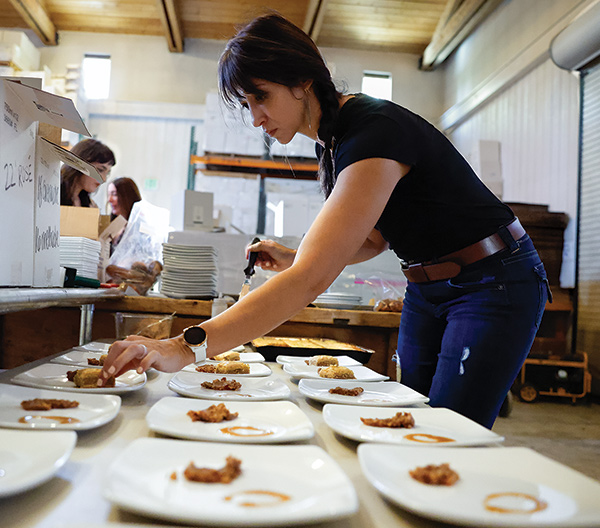
Into the barrel
Most varietals of the freshly harvested grapes are put into stainless steel tanks for seven to 10 days, where they begin to ferment.
“I really enjoy fermentation. Doing punch down, pulling the stems is my favorite part in winemaking,” Abarca says, referring to stirring the freshly harvested grapes and removing stems. “It’s how you get to know each different varietal—how they’re reacting, changing: the colors, the flavors, the aromas.”
Next the juice is pressed from the grape hulls, using a soft touch that results in fruity, less bitter wines, a signature taste at the winery. Then the juice is aged in neutral oak barrels, which imparts little oak flavor and which Abarca says allows the grape flavors to shine.
“We don’t really like oaky wines because I think it hides the real aromas and flavors of the wine,” he says.
The wine, depending on varietal, ages for more than a year in the barrels. Long barrel aging “cuts the tannins and smooths the wine,” Abarca says. “It develops the flavors they need through aging.”
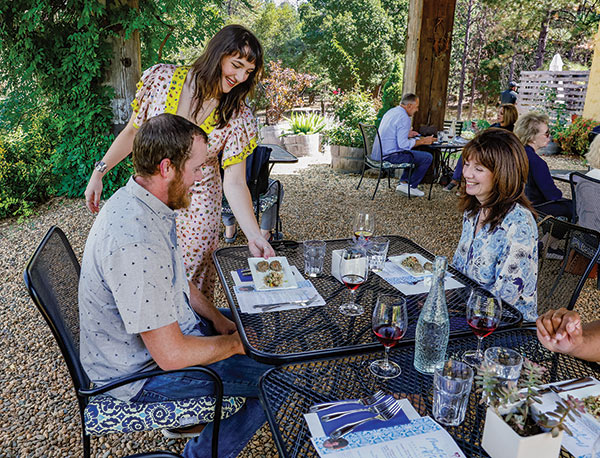
Pour a glass
Right when a bottle is opened, Abarca says he wants “to smell the true smell of the wine.” For him, the aromas can be more than half of what he’ll expect from the taste of the wine, and from just the aroma alone, he can imagine how it will taste. What he’s looking for in a wine is to taste the fruit.
“You have to swirl before you sip. By doing that, you’re aerating the wine,” Abarca says. Aerating opens up the wine, allowing more flavors to come forward.
Of course, the missing ingredient here is food, and that’s Cuneo’s bailiwick.
“When I became a sommelier, that was what I wanted to do: Pair wine with food and create an experience,” she says. “I was pleasantly surprised when I came to Miraflores at the extensive wines that they made that were extremely food friendly. Not only is the dish transformed with the right wine, but the wine is transformed with the right dish. It’s just so much fun.”
Finally, how the wine is served enhances flavor, and while there is a shape of glassware for every style of wine, Cuneo says the fallback is a stemmed red wine glass, which “allows for the aromatics to come through” and is a nice everyday glass to use.
Each decision—from grape choice, when to pick, barrel treatment and how to serve—ends up in every sip of wine you drink. At Miraflores Winery, they lead to distinctive fruit-forward wines reflecting the Sierra Nevada foothills. At wineries throughout the state, these decisions reflect winemakers’ styles, preferences and locales. All told, these decisions create California’s reputation for fine wines around the world.
Custom crush: They’ll make it for you
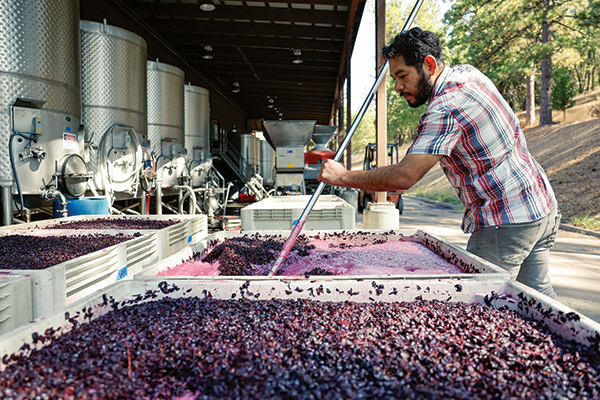
Wine for the Miraflores Winery label is only one-third of the production at the El Dorado County site. Miraflores produces wine for 11 other local wineries. The respective winery owners tell Miraflores winemaker Fernando Abarca what they are looking for in a wine, and then it’s up to Abarca to deliver.
“They trust us,” he says.
It also proves that terroir is a real thing.
“I work with the same type of grapes from different areas, and they’re all different,” he says. “It proves to me between soils, elevation, temperature, the region … the wines are affected by that. Every single wine is different. They don’t taste the same. From varietal to varietal in this area, they’re way different.”

